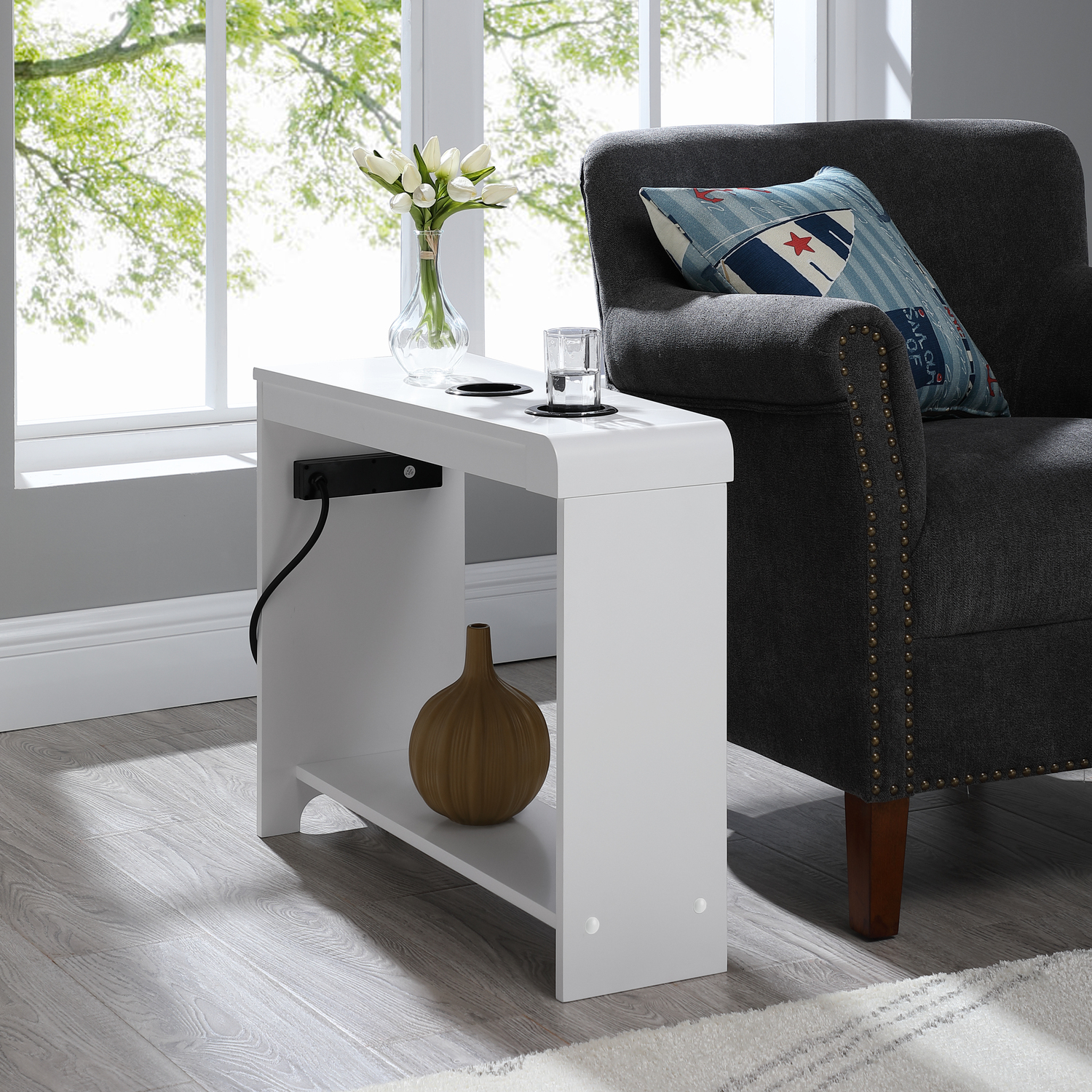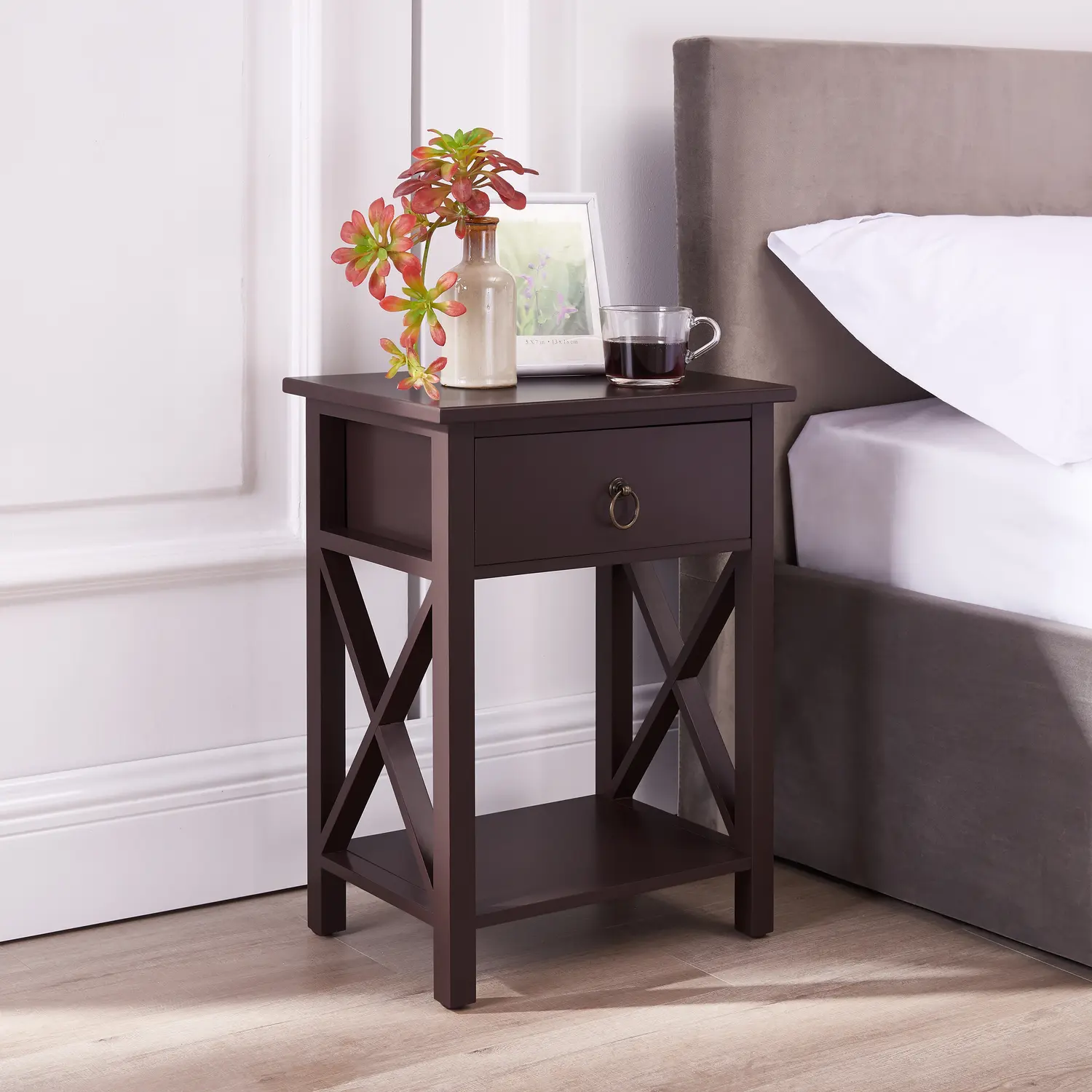
An end table may look like a small accent, but interior designers agree: it’s one of the hardest-working pieces in a home. From holding your morning coffee to anchoring a lamp, it blends functionality with style. Yet, not all end tables are created equal.
As someone who has styled and tested multiple living room setups, I’ve seen how the right end table can complete a space—and how the wrong one can throw off proportions entirely. In this guide, I’ll walk you through everything you should consider before buying, backed by design principles and practical experience.
Why End Tables Matter More Than You Think ?
Interior designer Leanne Ford once said, “Furniture is not just about filling space—it’s about how you live in it.” End tables embody that philosophy perfectly.
- They frame your sofa and chairs, giving balance to your layout.
- They offer convenience—no more awkwardly reaching for your phone or glass.
- They add personality, especially if you choose a bold material or unique design.
- They transition seamlessly across rooms—a great end table can move from living room to bedroom to office.
👉 Curious about sizing rules? Naomi Home’s guide on how tall an end table should be is a must-read before you measure.
Step 1: Size & Proportion – The Non-Negotiable
From personal experience, the biggest mistake people make is ignoring scale. A gorgeous table that doesn’t align with your sofa’s arm height will always feel “off.”
The design rule of thumb:
- Your end table should be within 2 inches of the sofa arm height.
- Standard range: 22–30 inches tall.
- Surface area should hold a lamp + book + coaster without clutter.
Example: The Jade Chairside Table with USB Ports & Outlets is built with sofa height in mind, making it practical for modern living rooms.
Step 2: Choosing Materials That Fit Your Lifestyle
Having tested wood, glass, and metal tables at home, I can confidently say: materials shape both the look and the lifespan of your furniture.
- Wood: Timeless, sturdy, easy to pair with most styles.
- Glass: Airy and modern but requires constant cleaning.
- Metal: Industrial, durable, and easy to blend with contemporary spaces.
- Stone / Marble: Luxurious but heavy—better as statement pieces.
- Mixed: Combining wood + metal or glass + brass is on-trend for eclectic rooms.
💡 If you want a blend of durability and function, the Eily Wooden End Table with Storage Shelf is a versatile pick.
Step 3: Storage & Functionality – Think Beyond the Surface
End tables aren’t just surfaces anymore. Modern homes need multi-taskers:
- Open shelving → for books and baskets.
- Drawers → for remotes, chargers, or clutter.
- C-tables → perfect laptop stands.
- Built-in charging → eliminates the need for tangled cords.
The Jade Chairside Table mentioned earlier is a real-life example of tech + furniture integration. I’ve seen families love it for keeping phones charged without ugly extension cords.
For styling advice, Naomi Home’s decor tips for end tables will help you strike the perfect balance of form and function.
Step 4: Style & Design – Matching Your Personality
End tables are a designer’s trick to subtly express personality. Over the years, I’ve noticed certain styles dominate living room transformations:
- Modern Minimalist → clean lines, slim metal frames.
- Farmhouse / Rustic → distressed wood, chunky silhouettes.
- Mid-Century Modern → tapered legs, walnut finishes.
- Industrial → metal frames + wood slabs.
- Glam → marble tops, metallic accents, or mirrored finishes.
For inspiration, browse Naomi Home’s Top 10 End Table Styles for Modern Living Rooms in 2025. It reflects both current trends and timeless design options.
Step 5: Placement Across Rooms
Many people stop at the living room, but in my own home I’ve used end tables in:
- Bedrooms → compact nightstands.
- Home offices → printer stands or storage helpers.
- Entryways → slim landing spots for keys and mail.
- Outdoor patios → weather-resistant designs that double as plant stands.
This flexibility makes end tables one of the best “investment-per-square-foot” furniture pieces.
Step 6: Budget & Value – Where to Spend
I’ve bought $70 end tables that wobbled in weeks—and $300 ones that have lasted years. The difference wasn’t price alone but materials and construction quality.
- Budget (< $100) → best for starter apartments.
- Mid-range ($100–$500) → balance of quality + style (most Naomi Home tables fall here).
- Luxury ($500+) → statement pieces that define the room.
Step 7: Shopping Online – Trust but Verify
When buying online, especially sight unseen, here’s what I always do:
- Check dimensions twice against your sofa.
- Look for assembly requirements—flat-pack vs pre-assembled.
- Read verified customer reviews to spot recurring issues.
- Review return & warranty policies before checkout.
Brands like Naomi Home stand out because they provide detailed guides and specs on product pages—an extra layer of trust.
Step 8: Safety & Longevity
Safety and durability are often overlooked but crucial.
- Families with kids → Rounded corners and stable bases are safer.
- Durability → Strong joinery (not just glue or staples).
- Finishes → Look for protective coatings that resist stains or scratches.
A well-constructed wooden table like the Eily model will age beautifully with proper care.
Step 9: 2025 Trends Worth Watching
Interior designers highlight these rising trends in end tables:
- Curved edges → safer, softer aesthetics.
- Sustainable woods → eco-conscious buyers prefer bamboo or reclaimed wood.
- Mixed textures → rattan shelves with wood tops, stone with metal.
- Tech integration → USB ports, wireless charging pads.
- Compact modular sets → nesting tables remain big for small homes.
These trends align with Naomi Home’s latest offerings—proof the brand is adapting to evolving customer needs.
Final Takeaway
The perfect end table balances function, proportion, and personality.
- Measure before you shop.
- Choose materials that fit your lifestyle.
- Think about extra storage and charging.
- Style it with intention—don’t let it become a clutter magnet.
- Invest wisely; a good table should last years.
For more guidance, don’t miss:
A well-chosen end table may be small, but its impact on your space is huge.
FAQ Section for End Table Buyer’s Guide
1. What is the standard height for an end table?
End tables are typically 22–30 inches tall, but the best height is within 2 inches of your sofa or chair arm height. Here’s a detailed guide on choosing the right height.
2. Should end tables match my coffee table?
Not necessarily. Matching can look cohesive, but mixing styles (like a wood end table with a glass coffee table) adds personality. Aim for balance in size and material.
3. What’s the best material for an end table in a family home?
Wood or metal tables are more durable than glass. If you have kids, choose rounded edges for safety.
4. Can I use an end table as a nightstand?
Absolutely. Many end tables, like the Eily Wooden End Table with Storage Shelf, double beautifully as bedside tables.
5. What features should I look for in a modern end table?
Built-in USB ports, hidden storage, or modular designs are popular. For example, the Jade Chairside Table with USB Ports is perfect for modern homes.
6. How do I style an end table without cluttering it?
Stick to 2–3 items max: a lamp, a decorative accent (like a vase), and a functional piece (like a coaster). For ideas, check out Naomi Home’s styling guide.
7. Are end tables worth investing in pairs?
Yes—pairs create symmetry, especially with a large sofa. But in small spaces, one statement end table may be enough.


Oh, this guide is a treasure trove! I especially loved the part about families loving the Jade Chairside Table for charging phones without cords – because what’s more charming than beautiful furniture solving the *ugly extension cord* problem? 😉 The section on matching styles made me chuckle; apparently, if your living room is a混搭 (eclectic) nightmare, youre now on-trend. And the budget advice? Priceless! Who knew $300 could buy you years of wobble-free luxury (or just a really expensive paperweight)? Definitely saved me from buying that $70 wobbly disaster I was eyeing. Cheers, Naomi Home, for making my shopping decisions this easy (and slightly more expensive)!Free Nano Banana
房中秘术、泡妞把妹、丰胸美体、奇淫巧技!价值十万电子书下载网址:https://www.1199.pw/
It’s fascinating how platforms like Jili7 blend tradition with AI-driven insights, enhancing both gameplay and strategy for modern players.